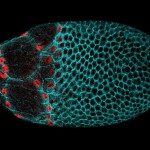Link to Pubmed [PMID] – 24278237
PLoS ONE 2013;8(11):e80054
The MSX2 homeoprotein is implicated in all aspects of craniofacial skeletal development. During postnatal growth, MSX2 is expressed in all cells involved in mineralized tissue formation and plays a role in their differentiation and function. Msx2 null (Msx2 (-/-)) mice display complex craniofacial skeleton abnormalities with bone and tooth defects. A moderate form osteopetrotic phenotype is observed, along with decreased expression of RANKL (TNFSF11), the main osteoclast-differentiating factor. In order to elucidate the role of such an osteopetrosis in the Msx2 (-/-) mouse dental phenotype, a bone resorption rescue was performed by mating Msx2 (-/-) mice with a transgenic mouse line overexpressing Rank (Tnfrsf11a). Msx2 (-/-) Rank(Tg) mice had significant improvement in the molar phenotype, while incisor epithelium defects were exacerbated in the enamel area, with formation of massive osteolytic tumors. Although compensation for RANKL loss of function could have potential as a therapy for osteopetrosis, but in Msx2 (-/-) mice, this approach via RANK overexpression in monocyte-derived lineages, amplified latent epithelial tumor development in the peculiar continuously growing incisor.
